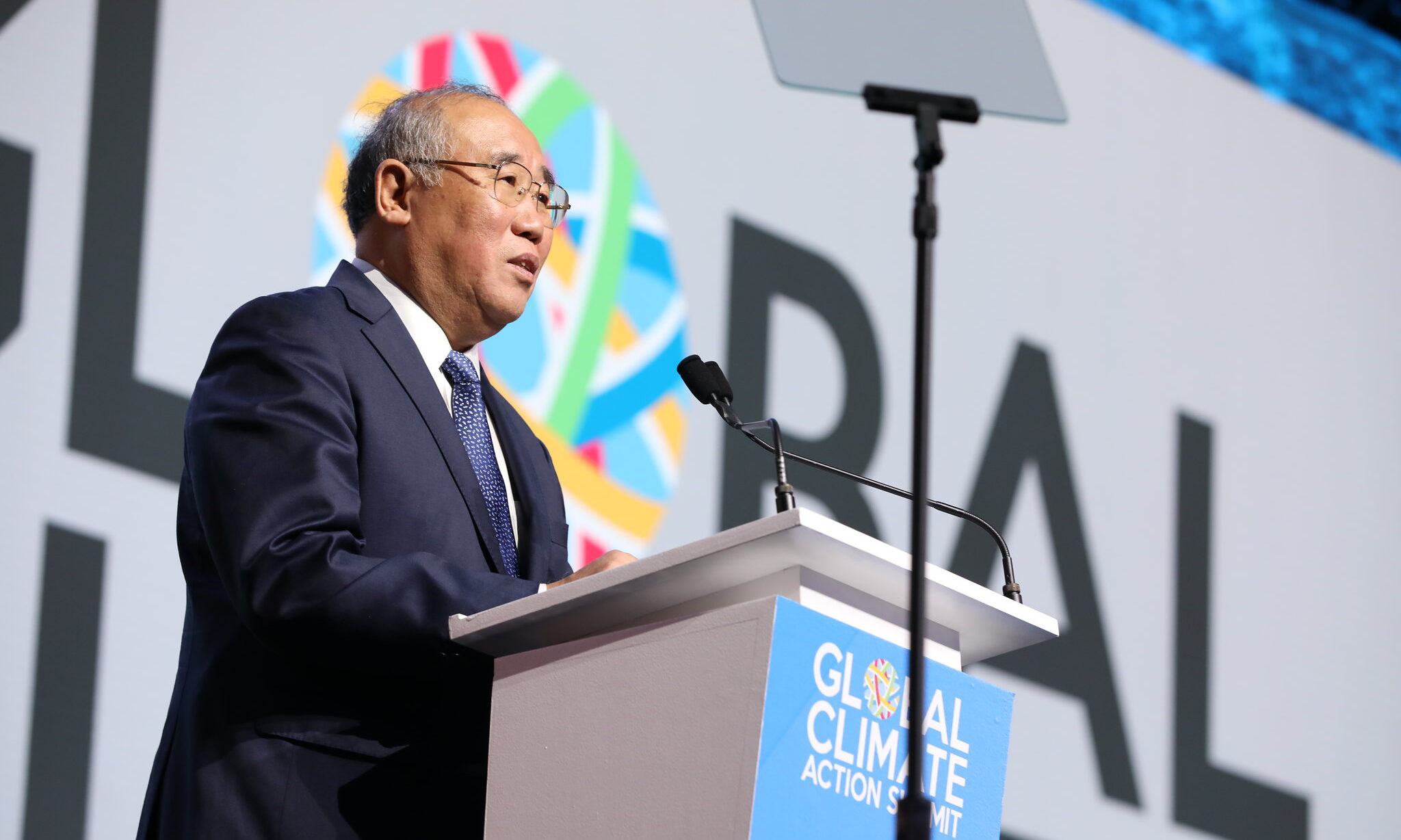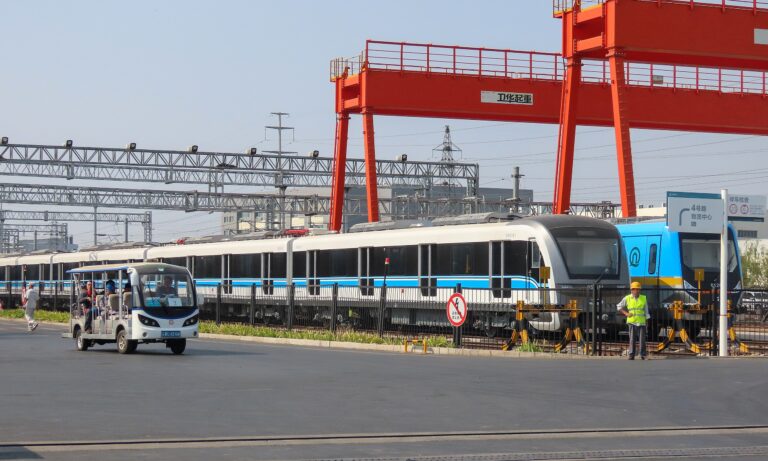
China needs to step up ambitions on its emission trading system to contribute to global decarbonization efforts.
China profiles itself as a country with an ambitious climate and environmental policy. In 2020, President Xi Jinping announced his intention to make China a carbon-neutral country by 2060, while adding that China’s total emissions should reach an absolute peak before 2030.
After seven pilot projects in Chinese cities and provinces, in 2021, China launched a national carbon market, or emissions trading system (ETS) which immediately became the world’s largest in terms of covered emissions. While the short-term goal of China’s ETS is to raise awareness around emissions monitoring and to help businesses realize emitting carbon is linked with a cost, in the long term, the objective of the scheme is to provide emitting companies with a market-driven incentive to reduce emissions from the emission-intensive electricity sector. In the EU, the European Emissions Trading System (EU ETS) has helped reduce emissions from power plants and industry by 37 percent since 2005.
The goal of climate neutrality and the plan to reach the emissions peak by 2030 certainly surprised many, also because China has historically never been a pioneer of climate policies. China is the world’s largest producer of greenhouse gasses – it accounts for about 26 percent of global emissions, and therefore, from the point of view of limiting global warming, it is very important if and how it meets its emission obligations. Can China’s ETS play the same role in reducing emissions of the country’s energy and industrial sectors as its European predecessor did in the EU?
A Broken Market?
China’s ETS includes more than 2,000 companies which produce about 4.5 billion tons of carbon dioxide annually. For comparison, in 2021, the EU ETS had a limit of 1.6 billion tons of CO2. While the European system covers power plants and heating plants, industrial production plants such as refineries, cement plants, steel plants, as well as intra-European flights and maritime transport, the Chinese carbon market covers only electricity production. At the same time, already in 2016, when the launch of the system was announced, China proposed covering other sectors such as iron and steel production, aluminum, cement and the paper industry, i.e. the most emission-intensive sectors of the economy.
However, the carbon market has not yet expanded to other industries, mainly due to insufficient quality and a general lack of data. While the exact date of expansion is unknown, the Ministry of Ecology and the Environment is currently counting on the inclusion of these sectors in the emission trading scheme in 2025. But it could happen even earlier, as the recent news about the inclusion of the cement and aluminum sectors indicates. This is because sectoral expansion is becoming a priority due to insufficient market liquidity. More market participants would lead to a higher-quality price signal which would result in more market activity.
However, insufficient coverage is not the main problem of China’s carbon market. The EU ETS is a so-called cap-and-trade system. The permit market has a set emission ceiling for the total amount of greenhouse gasses that facilities on the carbon market can emit. This ceiling is expressed in emission allowances, and it decreases every year. Companies included in the system must hand over allowances for each ton of CO2 emitted under the threat of heavy fines. At the same time, they trade allowances with each other as needed.
Within the framework of pilot projects, even before the launch of the national carbon market, China cooperated closely with the European Commission and its experts on the topic of carbon markets. However, the two schemes are far from being similar. China’s ETS has no absolute ceiling and this is also the biggest difference between the two emission trading systems. Therefore, the Chinese ETS is not even a cap-and-trade system yet. What is more, emission allowances are allocated free of charge in the Chinese system, depending on how much electricity a given power plant produces. The system of free allocation also persists within the EU carbon market. Every year, however, the amount of allocated allowances for the manufacturing industry decreases. In principle, European power plants have not received any allowances for free since 2013, which also led to a significant reduction in emissions from the energy sector.
Emission allowances are therefore cheap in China – one currently costs around 60 RMB, or €7 to €8 (about ten times less than the current price of the EU’s emission allowance). This is a similar price to the European carbon market between 2012 and 2017, when the system also struggled to reallocate allowances for free. Clearly, the design of a carbon market has major impacts on the resulting allowance price and thus on the system’s overall success in reducing emissions in the covered sectors. If China’s ETS is to be successful and an example of an effective policy to reduce greenhouse gas emissions, it must undergo a major reform.
What incentive does China’s carbon market offer to reduce emissions when its allowances are allocated according to the number of verified emissions? Those companies that are able to produce less emissions per unit of electricity produced can generate a surplus of allowances for sale – this is how the allowance price is formed as well. At the same time, China has an incentive to exempt its companies from paying carbon border fees.
CBAM Enters into Force
On October 1, 2023, the European Carbon Border Adjustment Mechanism, or CBAM, was officially launched. According to the new regulation, EU importers will have to pay for emission-intensive products destined for the EU. This will also apply to China, which is one of the Union’s key trading partners and accounts for 10 percent of all imports covered by the CBAM.
Until 2025, during the transition phase, importers will only have to monitor and report emissions of their products. But starting from January 1, 2026, when the system fully enters into force, foreign companies will have to start paying for emission-intensive products. If these products are subject to a domestic carbon market, producers will pay the difference between the carbon price in the country of production and the price of the emission allowance in the EU.
With the new legislation, the EU promises a global expansion of climate ambitions and ensuring competitiveness for the domestic industry, which is exposed to high fees for carbon emissions. With the launch of CBAM, countries exporting to the EU, including China, have an incentive to tax carbon on the domestic market. This is also why China should not delay its sectoral expansion. If it does not move ahead, its producers will be contributing to the EU budget instead of paying duties in China.
The Future of Carbon Markets Depends on the Success of China’s ETS
At the start of 2023, 23 percent of global emissions were covered by some form of carbon pricing. Since its launch, China’s ETS has been hailed as an ambitious climate policy, covering more emissions than the rest of the world’s carbon markets combined. China has declared addressing climate change a priority and is a dominant market player when it comes to renewable energy and electromobility. However, the launch of China’s carbon market can certainly not be called a success yet. If the system is to effectively reduce emissions, China’s ETS must set an emissions cap, stop over-allocation and expand to other industries.
The European carbon market did not get off to an ambitious start either. However, it has been reformed over time and is currently considered an effective tool. Also because of carbon tariffs like CBAM, China’s ETS can serve as a model for other countries to implement a domestic carbon market. It is important that it becomes an example to be followed and not a dysfunctional climate policy. The future of carbon markets may depend on the success or failure of China’s ETS.
Written by
Jan Svoboda
jansvobodanetJan Svoboda is AMO Research Fellow and Project Coordinator. Jan is currently focusing on European energy and carbon markets, energy transformation and low-carbon energy sources.


